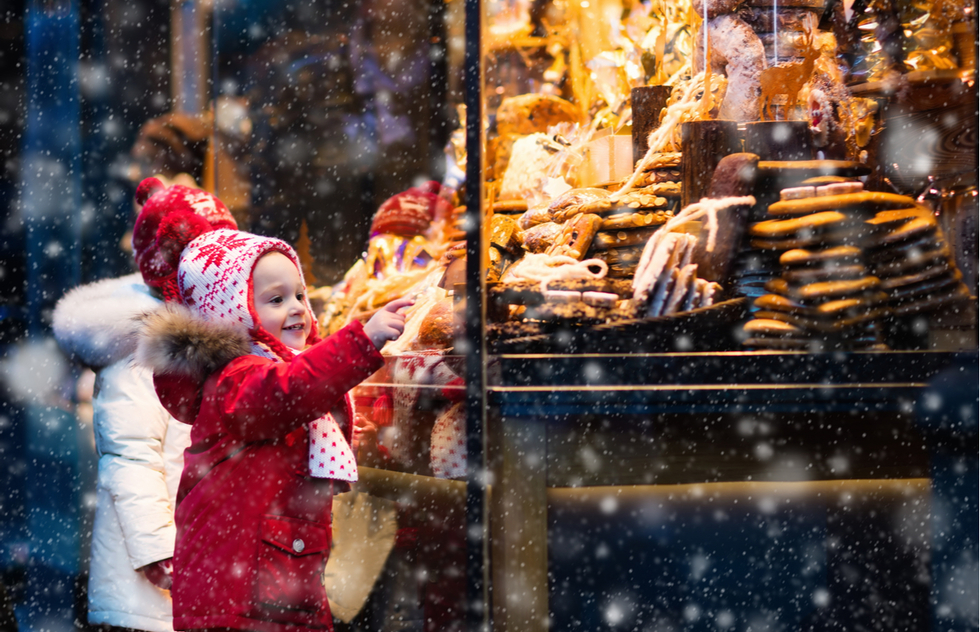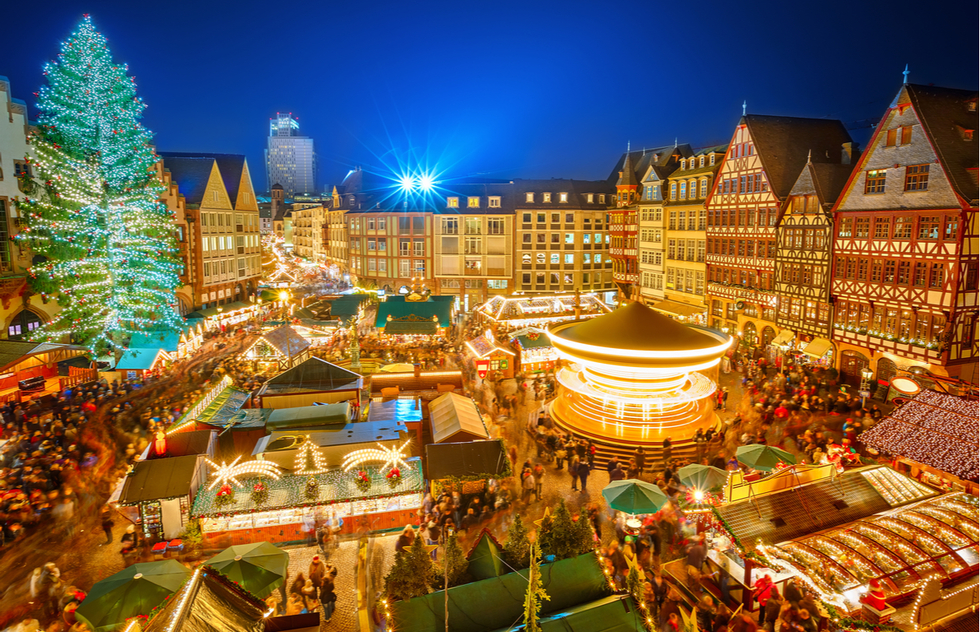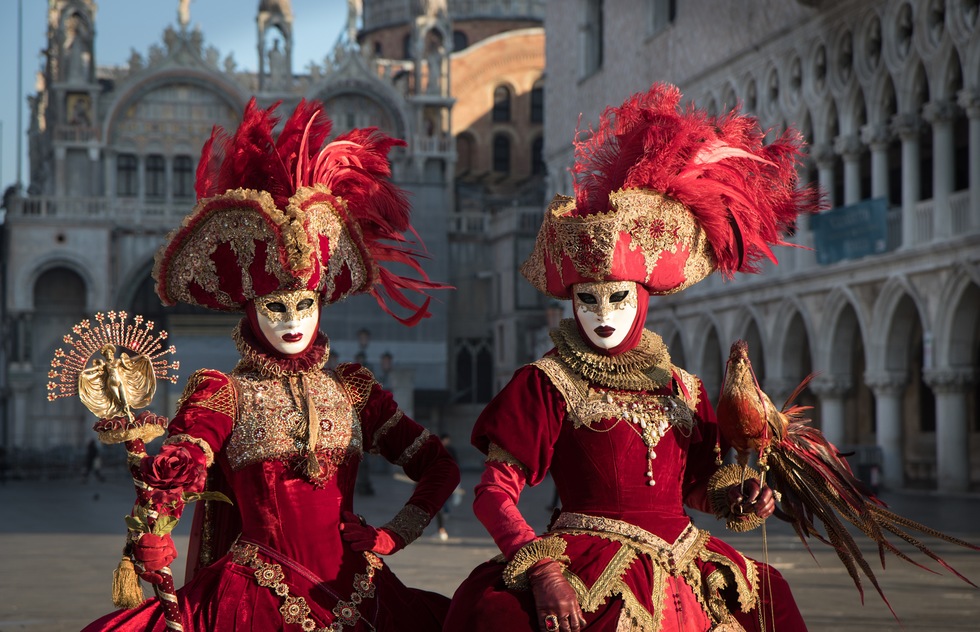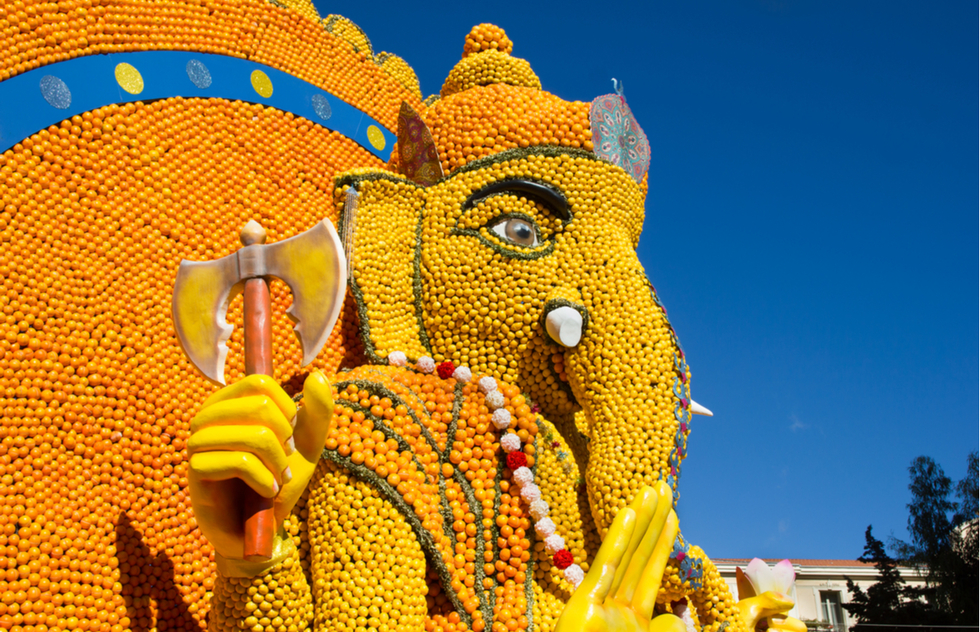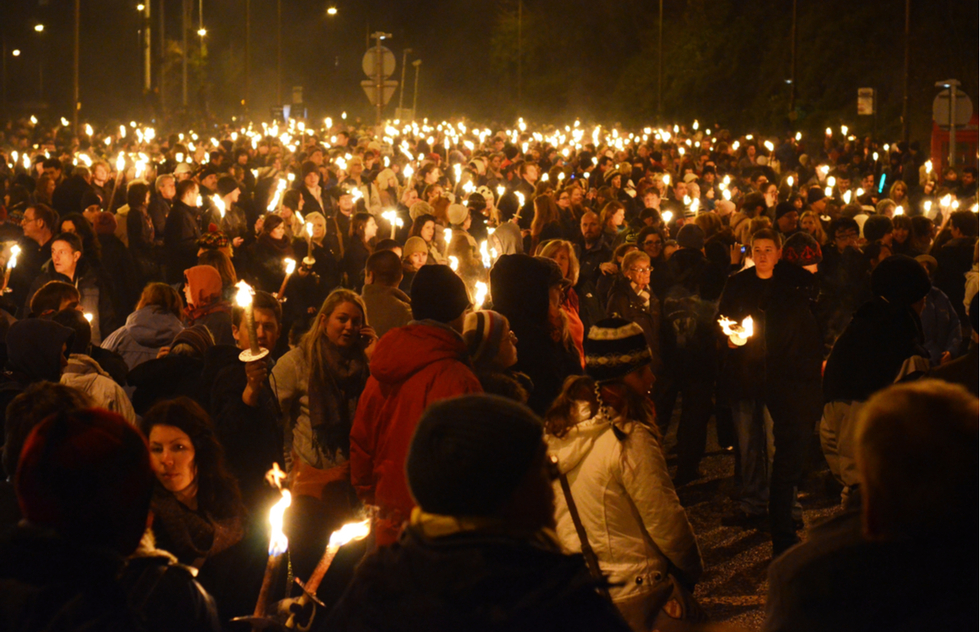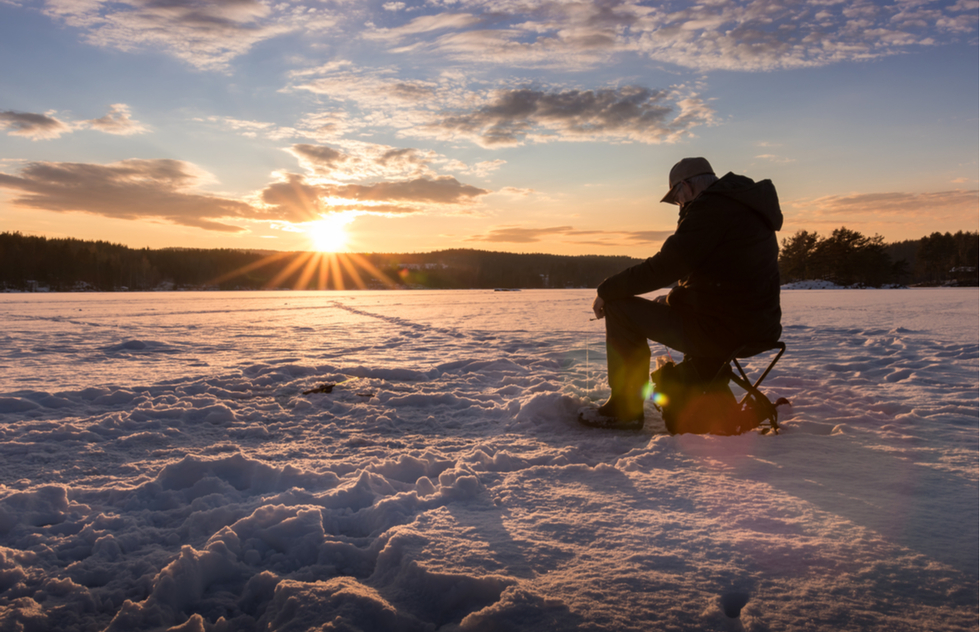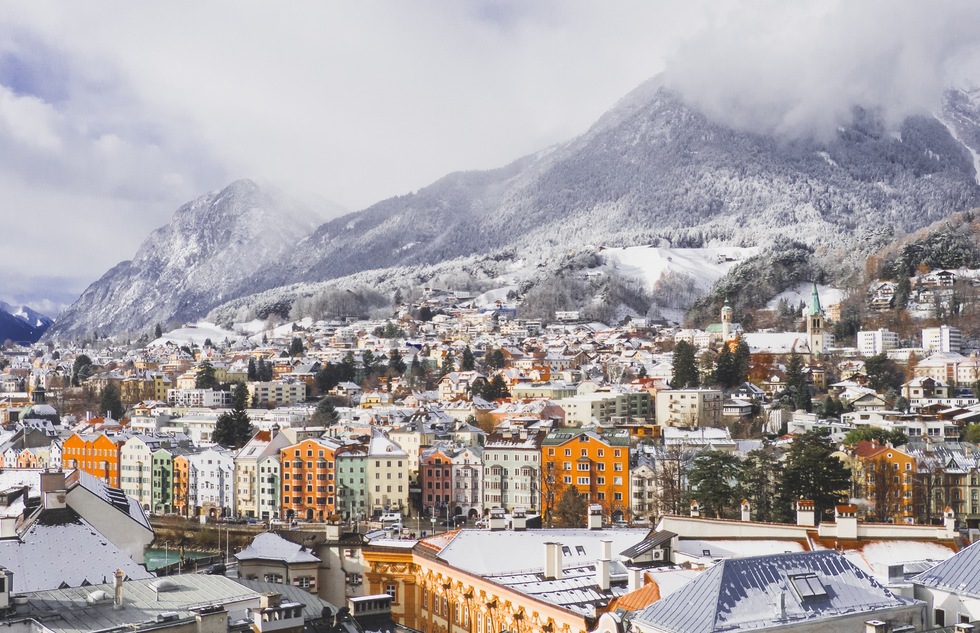Europe in Winter: Where to Go in December, January, and February
By Frommer's StaffSome of Europe’s wonders can only be experienced in winter—Christmas markets, the Northern Lights, alpine skiing, and breathing room in Venice all come to mind. Good luck finding that last thing in tourist-clogged July and August. But in December, January, and February, many of the continent’s overpopular destinations get a break from visiting throngs (except during major holidays and special events). What's more, prices for airfare and hotel rooms take a dive, and the pace slows down considerably. There can be tradeoffs such as reduced business hours and chilly or soggy weather, but snow-blanketed medieval villages, cozy mountain lodges, locals who don’t dread your presence, and lots of mulled wine help bring new meaning to the term “cold comfort.” Here are our favorite winter getaways in Europe.
Pictured: window shopping in Munich, Germany, at Christmastime
For more seasonal travel inspiration, check out our roundups of great European destinations in spring, summer, and fall.
With all due respect to the North Pole, no place gets into Christmas like Germany. From late November to early January, seemingly every public square in the country sprouts a Christkindlmarkt to celebrate the season with carols, Nativity scenes, twinkling lights, gingerbread, handcrafted decorations for sale in open-air stalls, and, of course, all the Glühwein you can glug. Options range from Berlin’s 70-something markets to small-town festivals in Black Forest settings that recall the interiors of snow globes. Cologne’s music-heavy market takes place in front of the city’s famed cathedral, Nuremberg’s crowded spectacle kicks off with help from an angel, and Dresden’s version—the oldest in Germany—showcases a 4-ton fruitcake. Beyond the yuletide goings-on, Germany rewards wintertime visitors with legendary skiing in the Bavarian Alps and fairy-tale scenes of frosted castles.
Pictured: Christmas market in Frankfurt
Let’s get the negatives out of the way first. Yes, you might encounter rain and shin-high flooding in Venice’s famous piazzas in the winter. That’s the so-called acqua alta (high water) season. It lasts from late October through January and necessitates usage of a suitcase that can fit galoshes. But because Venice is one of the most overtouristed cities on the planet, the off-season has become the only time of year when you can actually find serenity in La Serenissima. Museums, churches, palaces, and other exquisite sights aren’t elbow-to-elbow with tourists when the weather turns chilly. Plus, if you come during Carnival (pictured) in February or March, you’ll get to witness a uniquely mysterious and glamorous spin on that hedonistic tradition.
A no-brainer for skiers and snowboarders, Zermatt sits at the base of the Matterhorn, which rivals the Toblerone candy bar for the title of Switzerland’s Most Iconic Pyramid. The elevated terrain surrounding Zermatt encompasses more than 360km (224 miles) of downhill ski trails that draw winter sports enthusiasts from around the world. (Fair warning: This time of year, visitor numbers and prices are as high as the altitude.) The resort town also has rinks for curling and ice skating, hills for sledding, courses for cross-country skiing, and, for viewing snowy landscapes without traversing them on foot, an elaborate network of aerial cable cars as well as the Glacier Express train to St. Moritz. Before you leave Zermatt, though, don’t miss out on the lively aprés-ski scene.
Citrus fruits, British nobles, and artists have historically thrived in Menton, the warmest spot on the French Riviera. Though winter is sedate, this Mediterranean city comes out of sleep mode in mid-February, when over 200,000 lemonheads converge for the Fête du Citron—Mardi Gras for the citrus set. The two-week festival features fireworks, lemon sculptures up to 30 feet high, and parades of elaborate floats studded with the fruit of honor. For extra zest, throw in a pastel medieval quarter, a Jean Cocteau museum, botanical gardens (including the Jardin Serre de la Madone, a national monument), and Mirazur, regarded by many as the world’s best restaurant. Around town, hearing Italian as you eat your pasta reminds you that the border is minutes away, and Monaco can be reached by a 90-minute walk along a seaside promenade.
The Scottish capital gets our summer love for being the king of artsy festivals, but cold weather doesn’t make it go dormant (unlike the extinct volcanoes that give the city its rugged lift). In December, Edinburgh spreads cheer with ice skating, an enclosed Ferris wheel, and the obligatory mulled wine and holiday markets. At the King’s Theatre, check out the panto (from “pantomime"), a U.K. winter tradition inspired by fairy tales and musical comedy. But you’re really here for an unforgettable New Year’s Eve. Hogmanay is an epic 3-day street party of musical acts, fireworks, and dance. The luminous beauty of 8,000 revelers winding through the streets during the torchlight procession (pictured) might make you finally understand the words to "Auld Lang Syne."
Europe has limited options for winter travelers trying to escape the season’s deep freeze. But although the weather in southern Spain’s sunny Andalusia region isn’t exactly pool-friendly in January, daytime temperatures remain pleasant this time of year (62°–64°F/17°–18°C)—a far cry from the area’s sweltering summers. In the Andalusian capital of Seville, conditions are good for walking tours that show off the city’s architecture, including the Gothic cathedral and the Moorish Alcázar palace (pictured). If you’re in town on the night of January 5, you can watch the big parade that marks Three Kings' Day; traditionally, that’s the Christmas season’s gift-giving holiday here, not December 25. Winter evenings can get chilly, but tapas and flamenco dancing should warm you up.
Ever wanted to try ice fishing? It's one bucket-list item for which you'll need an actual bucket. Learn the skill during guided outings on the lakes of Norway. Locals put you up in snuggly cabins, provide the tools, and show you how to drill through the ice to catch trout, perch, pike, char, and burbot. In the village of Gjøvik on Lake Mjøsa, the country's largest lake (two hours by train from Oslo), stay in the Hotel Grand, built in 1902. After the day's catch, warm up with a hands-on visit to the Hadeland glassworks, where the furnaces have been firing since the 1800s. On the seacoast, prevailing currents keep the waters ice-free, and winter is primetime for migrating cod that can weigh up to 99 pounds. For that, stay around the Lofoten Islands, which in more reckless times had the world's biggest cod-catching industry. While you fish, snowshoe, and sled, you might catch sight of the Northern Lights—and there's one more bucket-list item achieved.
The volcanic island of Madeira, off the coast of Morocco in the Atlantic Ocean, epitomizes its parent nation, Portugal. Orange roofs, intricate tilework, and balconies built for relaxing are plentiful. Capital city Funchal, arranged like an amphitheater around its port, is the ideal setting for fireworks, and on New Year's Eve, one of the world's largest pyrotechnic displays is staged here. In fact, the island puts on a show all winter long. In December, the streets are filled with fairy lights and elaborate presépios (Nativity scenes). Come late February, an epic Carnival (pictured) kicks off with fabulous feathery costumes, music, traditional dance, over-the-top floats, and outdoor parties where revelers stuff themselves with malassadas (fried dough) served with molasses. And we haven't even gotten to the island's famous wine—but we know you will.
To ski or not to ski? That’s the question in Innsbruck, which abounds with winter sports as well as historical and cultural offerings. Site of the 1964 and 1976 Winter Olympic Games, the city is located amid eight major ski areas with a combined total of more than 500km (311 miles) of trails. One mountain resort can be reached via a funicular right in the center of town; another ski area sits atop a glacier, pretty much guaranteeing good powder even when not much snow has fallen. But pulling yourself away from sightseeing is a challenge in this little city, once the center of the mighty Habsburg Empire. Innsbruck’s splendid palaces, churches, and cobblestoned neighborhoods are made even more intriguing by strange and salacious stories about the royals who once lived here. Other attractions vying to draw you from the slopes: museums devoted to Tyrolean culture, fun taverns, impressive restaurants, and, nearby, the quirky Swarovski Crystal Worlds.
The capital of Finnish Lapland is also the “official” hometown of Santa Claus. You can visit the right jolly old elf at his own Arctic Circle village, a year-round tourist attraction with reindeer-drawn carriage rides, ice sculptures, and halls so decked they’d give the Grinch PTSD. To learn more about Lapland history, nature, and culture, head to the Arktikum museum, where exhibits detail how wildlife and humans alike have adapted to—and altered—the polar setting. A riverside park behind the museum is a good spot for staking out the Northern Lights, which often shimmer above Arktikum’s striking glass corridor. And that might be the only illumination you see in the sky. Starting around the winter solstice, the region experiences the opposite of the midnight sun: daylong stretches of twilight broken only by “blue moments” when the sky is suffused with soft shades of pink and violet.





